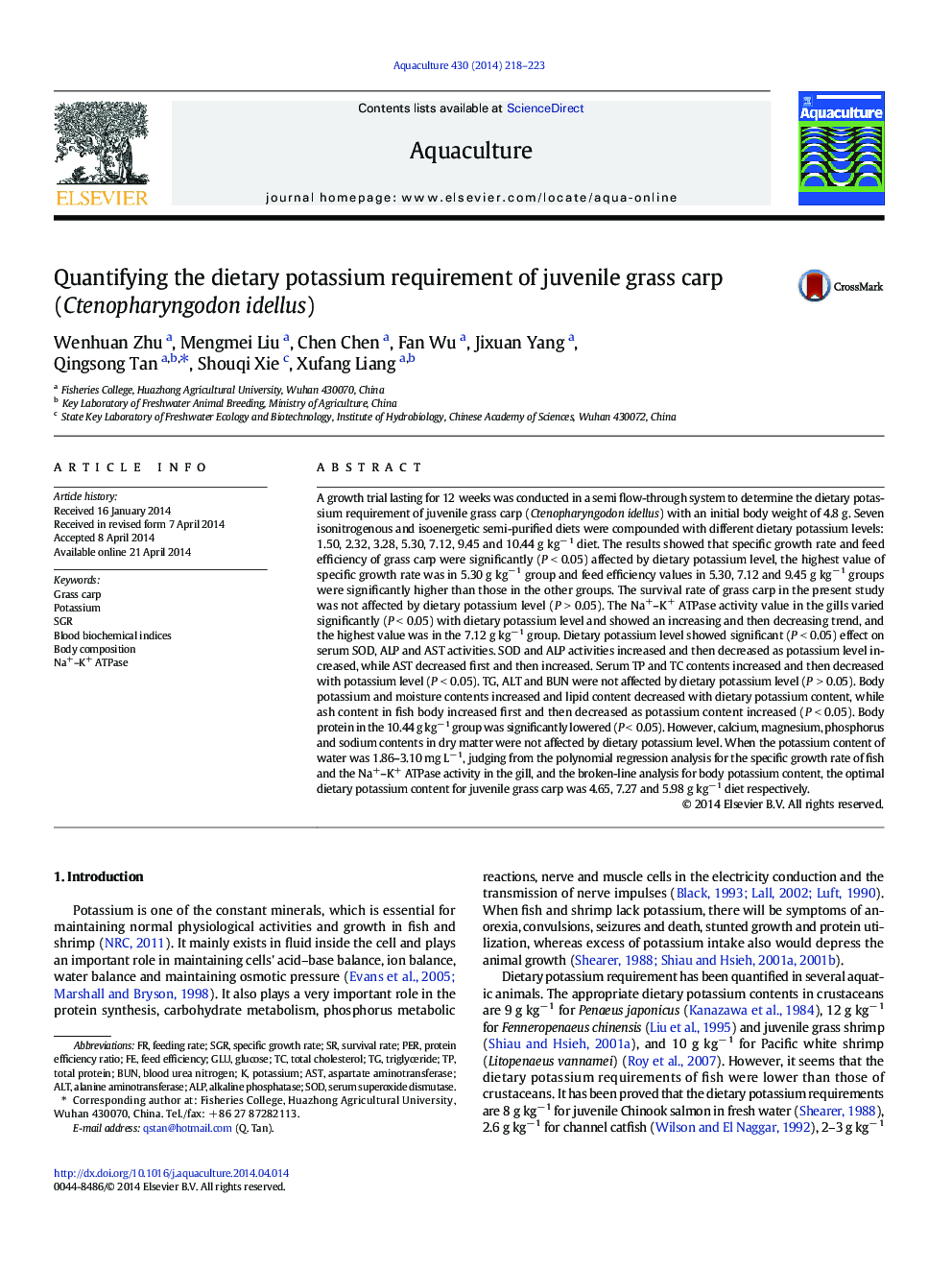| کد مقاله | کد نشریه | سال انتشار | مقاله انگلیسی | نسخه تمام متن |
|---|---|---|---|---|
| 2421836 | 1552857 | 2014 | 6 صفحه PDF | دانلود رایگان |

• Potassium requirement in juvenile grass carp diet with 29% protein was proposed.
• Potassium requirement and protein level in grass carp diet are positively correlated.
• The effects of dietary potassium level on blood biochemical indices were explored.
A growth trial lasting for 12 weeks was conducted in a semi flow-through system to determine the dietary potassium requirement of juvenile grass carp (Ctenopharyngodon idellus) with an initial body weight of 4.8 g. Seven isonitrogenous and isoenergetic semi-purified diets were compounded with different dietary potassium levels: 1.50, 2.32, 3.28, 5.30, 7.12, 9.45 and 10.44 g kg− 1 diet. The results showed that specific growth rate and feed efficiency of grass carp were significantly (P < 0.05) affected by dietary potassium level, the highest value of specific growth rate was in 5.30 g kg− 1 group and feed efficiency values in 5.30, 7.12 and 9.45 g kg− 1 groups were significantly higher than those in the other groups. The survival rate of grass carp in the present study was not affected by dietary potassium level (P > 0.05). The Na+–K+ ATPase activity value in the gills varied significantly (P < 0.05) with dietary potassium level and showed an increasing and then decreasing trend, and the highest value was in the 7.12 g kg− 1 group. Dietary potassium level showed significant (P < 0.05) effect on serum SOD, ALP and AST activities. SOD and ALP activities increased and then decreased as potassium level increased, while AST decreased first and then increased. Serum TP and TC contents increased and then decreased with potassium level (P < 0.05). TG, ALT and BUN were not affected by dietary potassium level (P > 0.05). Body potassium and moisture contents increased and lipid content decreased with dietary potassium content, while ash content in fish body increased first and then decreased as potassium content increased (P < 0.05). Body protein in the 10.44 g kg− 1 group was significantly lowered (P < 0.05). However, calcium, magnesium, phosphorus and sodium contents in dry matter were not affected by dietary potassium level. When the potassium content of water was 1.86–3.10 mg L− 1, judging from the polynomial regression analysis for the specific growth rate of fish and the Na+–K+ ATPase activity in the gill, and the broken-line analysis for body potassium content, the optimal dietary potassium content for juvenile grass carp was 4.65, 7.27 and 5.98 g kg− 1 diet respectively.
Journal: Aquaculture - Volume 430, 20 June 2014, Pages 218–223